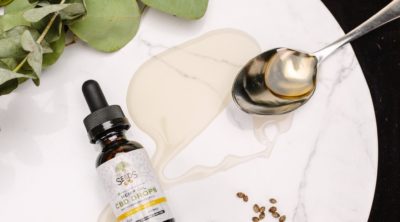
Acupressure is an age-old healing technique that originated in China. Today, it has gained recognition throughout the world as an alternative medicine for treating a wide range of ailments, including headache.
Being an ancient healing technique, acupressure is often considered a variation of the acupuncture technique, as both techniques are based on the same principles. Both, acupressure and acupuncture, work by stimulating certain specific pressure points located at different points all over the body.
The stimulation of these pressure points is believed to improve our body’s response to a number of health conditions. The only difference between both processes is that, in acupuncture, the pressure points are stimulated with the help of needles, while in acupressure, fingers, elbows, or some special devices like acupressure balls and mats are used for this purpose.
More About Acupressure
According to the ancient Chinese practices of acupressure and acupuncture, there are more than thousand pressure points in our body, which are located on meridians. Meridians are imaginary lines through which the life energy flows. Any obstruction in the flow of this energy is believed to be associated with different diseases. The flow of energy through the meridians can be improved by stimulating the acupressure points. This can provide relief from several diseases, including headache.
Determining or locating the exact pressure points associated with headaches is crucial for treating headaches. A beginner can consult an expert in this field, or take the help of the reflexology map, in order to locate the pressure points associated with headaches. To stimulate these pressure points, you have to gently massage or apply pressure on them with the help of fingers.
Using Acupressure to Get Relief from a Headache
A headache can be a symptom of numerous health conditions, and can be associated with tension, stress, and fatigue. The pressure points that are generally stimulated to reduce headaches are, gallbladder 20 or Gb 20, large intestine 4 or Li 4, and the point Lv 3.
The gallbladder 20 or Gb 20 pressure point is located at the base of the skull. It is the dent or depression that can be felt just below the base of the skull. The stimulation of this point can relieve headaches felt in the temple region, and the sides of the head. You can apply direct pressure on this point with your fingers for 2 to 3 minutes, and then gently massage the area. The other acupressure point, Li 4 or large intestine 4 is located in the web between the thumb and the index finger. Use your thumb of the other hand to press this point for about 2 to 3 minutes. Then massage the area with gentle strokes (towards the wrist) for another 2 minutes. The stimulation of this point can help relieve headaches, toothaches, and sinus pain.
Feet Reflexology
The point Lv 3, on the other hand, is located between the big toe and the first toe. The stimulation of this point can ease the pain behind the eyes. Apart from these, you can gently press or massage the temples and the inner corners of the eyebrows to ease the pain. Another effective pressure point for headaches is the one that can be found in the area where the eyebrows meet the nose bridge. You can feel a slight depression in that area. Massaging this point in upward direction for about 1 to 2 minutes can help relieve headaches.
Acupressure can be immensely helpful in managing tension and migraine headaches. One should also be careful not to stimulate some pressure points in certain conditions. For example, the Li 4 or large intestine 4 point should not be stimulated by pregnant women. The stimulation of this point is known to induce uterine contractions in pregnant women, which can cause premature labor. So, a lot of care and caution need to be maintained while practicing acupressure.
Disclaimer: This HolisticZine article is for informative purposes only, and should not be replaced for the advice of a medical professional.






